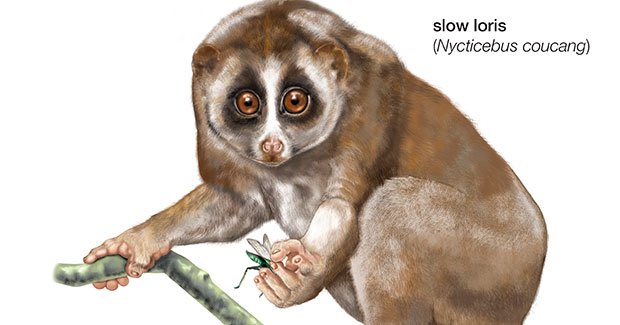Freeze-dried sperm creates endangered animal ‘ark’

JAPANESE SCIENTISTS HAVE USED a new, energy-efficient freeze drying technique to preserve endangered animals’ sperm in the hope of helping populate species in the future.
The bank, similar to a Noah’s Ark for genetic material, has already successfully stored the sperm of a giraffe, chimpanzees and a Sunda slow loris.
There are currently around 5000 animals species globally threatened by extinction, and lead scientist Dr Takehito Kaneko hopes that the process will allow researchers in the future to access the sperm of animals that may no longer be alive.
“In this way, scientists will be able to obtain genetic information more easily, which means we could help to preserve endangered animal species,” he says.
Easier way to store sperm
The new technique involves mixing sperm with a special preservation liquid, allowing it to be stored at 4ºC. Using freeze drying, sperm can also survive at room temperature for short periods of time, which would help the genetic material survive natural disasters and power shortages.
Currently, stored sperm is cryopreserved, which requires heavy liquid nitrogen equipment and significant energy use to keep sperm at -196ºC.
Early research indicates that the new less energy-intensive method of storing sperm is just as efficient as cryopreserving – researchers have freeze-dried sperm from rats and mice for up to five years and the spermatozoa have proven to still be viable.
If successful, this method could help populate Earth animals when they’re endangered or potentially even extinct – Takehito hopes it could help introduce Earth animal colonies on other planets.
“This may sound like a dream, but we could in future take genetic information into space,” says Takehito.
At the moment, scientists will need to use the freeze-dried sperm with fresh or cryopreserved occytes, but are looking into using the new technology to also preserve eggs.
Hope for conservation in Australia?
Dr Wayne Boardman from the School of Animal and Veterinary Sciences at University of Adelaide says this breakthrough is “a fantastic advance in science”, and may contribute to Australia’s conservation efforts.
However, sperm varies significantly between species, he adds, and research needs to be conducted into whether this method works across a broader range of animals, including marsupials.
“A lot more work needs to be done to prove how they work before it goes global,” says Wayne.
“If this technology were used for Australia’s marsupial species, it’ll be more complicated because they’ve a different reproductive physiology and biology.”
Australia’s frozen zoo
Australia already has a collection of cryopreserved animal material, including sperm, oocytes and embryos, of more than 100 endangered Australian species. The Monash University Animal Gene Storage and Resource Centre of Australia, also known as the Frozen Zoo, is part of the Frozen Ark Project headed by University of Nottingham, Britain. Funding for the project has been stalled since 2009, despite the threat of extinction to 196 Australian species, including the Tasmanian devil.
However, only one marsupial, a koala, has been produced through artificial insemination back in 1998, and no marsupials have yet been conceived using cryopreserved sperm. Wayne suggests dry frozen sperm could face the same difficulties.
He adds that while this sperm bank is a good backup plan, we shouldn’t rely too much on having an insurance mechanism before we know it’ll work.
“In Australia, removing our feral cats and foxes should still be our main conservation aim,” he adds.
RELATED STORIES
Aussie experts help save world’s rarest wolf
Echidnas have sex while sleeping, study says
Promiscuity pays for female finches
Saving Australia’s biodiversity
Lifetime of Conservation award: Bob Brown
Plight of the Platypus
Koalas to feel the heat with climate change
Private conservation protects Aussie species
Saving the tiger quoll
Marine conservation plan panned
Help save our tree kangaroos!
Kimberley could lose 45 species in 20 years

